Brazil, known for its vast and diverse landscapes, is a treasure trove of unique and exotic fruits. The country’s varied climate and geography provide the perfect conditions for a wide array of fruit species to flourish. From the lush Amazon rainforest to the fertile plains of the Southeast, each region brings forth its own distinctive contributions to Brazil’s fruit diversity. This has made Brazil not only a hotspot for biodiversity but also a key player in global fruit production.
Brazil’s tropical and subtropical climates, characterized by abundant rainfall and warm temperatures, support the growth of fruits that are rarely found elsewhere. The Amazon Basin, for example, is home to fruits like açaí and cupuaçu, which thrive in its humid environment. Meanwhile, the Cerrado, a vast tropical savanna, produces fruits such as pequi and cagaita. These unique fruits are not just important for their nutritional value but also play significant roles in various ecosystems, supporting wildlife and maintaining ecological balance.
Fruits in Brazil hold a special place in the daily lives and cultural practices of its people. From street markets bustling with vibrant colors to traditional dishes infused with tropical flavors, fruits are deeply ingrained in Brazilian cuisine. Açaí bowls, for instance, have gained international fame but are a staple in the Amazonian diet, offering a refreshing and nutritious treat. Similarly, fruits like passion fruit and papaya are commonly used in desserts, juices, and even savory dishes, showcasing the versatility and importance of these natural treasures.
Moreover, the cultural significance of fruits extends beyond the kitchen. Many fruits are used in traditional medicine and rituals, reflecting their integral role in Brazilian heritage. The rich diversity of fruits is not just a testament to Brazil’s natural wealth but also a reflection of its cultural richness and the deep connection between its people and the land.
Açaí: The Amazonian Superfruit

Açaí berries, small and dark purple in appearance, are fruits that flourish on açaí palm trees within the vast Amazon rainforest. Highly regarded for their exceptional nutritional profile, açaí berries are rich in antioxidants, particularly anthocyanins, which are known to support cardiovascular health and combat oxidative stress. The nutritional benefits extend further, as these berries also contain essential fatty acids, fiber, and an array of vitamins and minerals, making them a powerful addition to a balanced diet.
In Brazil, açaí is traditionally consumed in a variety of ways. One common method is as a frozen pulp, often blended and served in bowls topped with granola, bananas, and other fruits. This preparation, popularly known as açaí na tigela, is both a refreshing treat and a nutritious meal. In the northern regions of Brazil, açaí is sometimes paired with savory dishes, such as fish or manioc flour, showcasing its versatility in local cuisine.
The global popularity of açaí bowls has surged in recent years, transforming this once regional delicacy into a worldwide health trend. The demand for açaí has led to a significant economic impact on the Amazonian communities that cultivate and harvest these berries. The açaí industry provides vital income for local families, supporting sustainable livelihoods and promoting conservation efforts within the rainforest ecosystem.
As the interest in superfoods continues to grow, açaí remains at the forefront, celebrated not only for its nutritional benefits but also for its integral role in the cultural and economic fabric of Brazil. The journey of açaí from the Amazon to global markets underscores its importance as both a dietary staple and a symbol of sustainable development.
Cupuaçu: The Taste of the Amazon
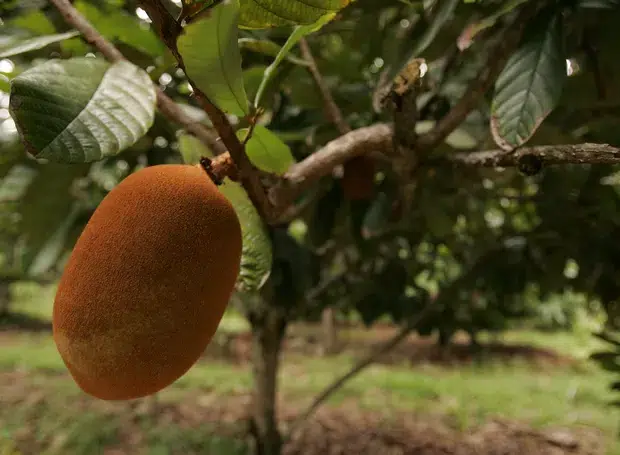
Cupuaçu, a tropical rainforest fruit closely related to cacao, is a hidden gem of the Amazon. Its creamy pulp offers a unique flavor profile, often described as a delightful blend of chocolate and pineapple. This distinct taste has made cupuaçu a popular ingredient in a variety of Brazilian culinary creations, from sweets to beverages.
In Brazilian cuisine, cupuaçu is celebrated for its versatility. It is a key component in numerous traditional desserts, such as cupuaçu mousse and ice cream, which highlight its rich and tangy flavor. Additionally, the fruit’s pulp is used in the production of refreshing beverages, including juices and smoothies, providing a natural sweetness and an exotic twist. The demand for cupuaçu extends beyond the kitchen, as it is also a prized ingredient in the cosmetic industry. Its butter, extracted from the seeds, is renowned for its moisturizing properties and is commonly found in lotions, creams, and hair products.
Beyond its culinary and cosmetic applications, cupuaçu is lauded for its impressive health benefits. The fruit is an excellent source of vitamins, particularly vitamin C, which is essential for immune system support and skin health. Furthermore, cupuaçu is rich in antioxidants, compounds that combat oxidative stress and may reduce the risk of chronic diseases. The presence of essential fatty acids and amino acids in cupuaçu also contributes to its reputation as a superfood, promoting overall well-being.
As awareness of its unique flavor and health advantages spreads, cupuaçu continues to gain popularity both in Brazil and internationally. Whether enjoyed in a delectable dessert, a refreshing drink, or a nourishing cosmetic product, cupuaçu offers a taste of the Amazon with every use. Its significance in Brazilian culture and its growing global appeal underscore the fruit’s versatility and the myriad benefits it provides.
Jabuticaba: The Brazilian Grape Tree
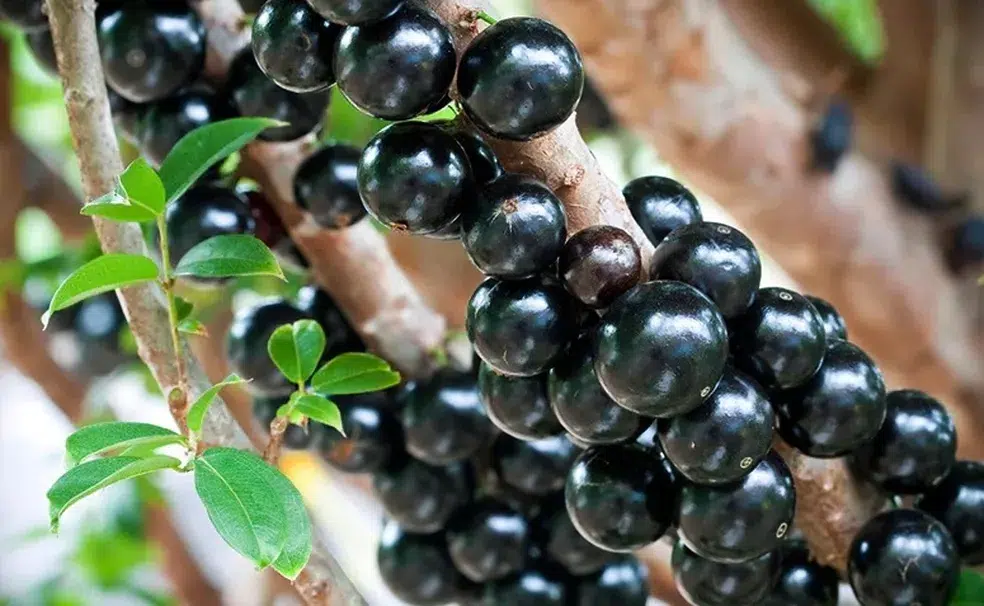
Jabuticaba, also known as the Brazilian grape tree, stands out as one of the most unique and exotic fruits of Brazil. Unlike typical fruit-bearing trees, jabuticaba produces its fruits directly on its trunk and branches, creating a visually striking appearance. The fruits are small, round, and deep purple, resembling grapes, which is why they are often referred to as Brazilian grapes. This fascinating growth pattern not only makes jabuticaba a botanical curiosity but also a subject of interest for many visitors to Brazil.
In terms of flavor, jabuticaba offers a delightful combination of sweetness and tartness. The thin, edible skin encases a juicy pulp that is both refreshing and aromatic. The taste is often compared to that of muscadine grapes, but with a unique tropical twist. Although jabuticaba can be enjoyed fresh off the tree, it is also highly valued for its versatility in culinary applications. Brazilians commonly use this fruit to make jellies, wines, and liqueurs, which are cherished for their rich, fruity flavors.
Beyond its culinary uses, jabuticaba holds significant cultural and historical importance in Brazil. It has been cultivated and revered by indigenous communities for centuries. The fruit is often featured in local festivals and traditional dishes, symbolizing the rich biodiversity of the Brazilian flora. Additionally, jabuticaba is celebrated for its health benefits, as it is rich in antioxidants, vitamins, and minerals, contributing to its popularity in local diets.
In Brazilian folklore and tradition, the jabuticaba tree is often associated with resilience and abundance, as it can produce fruit multiple times a year. This unique characteristic reinforces the tree’s symbolic representation of nature’s generosity. Today, jabuticaba continues to be a beloved fruit in Brazil, embodying both the natural beauty and cultural heritage of the region.
Camu Camu: A Vitamin C Powerhouse
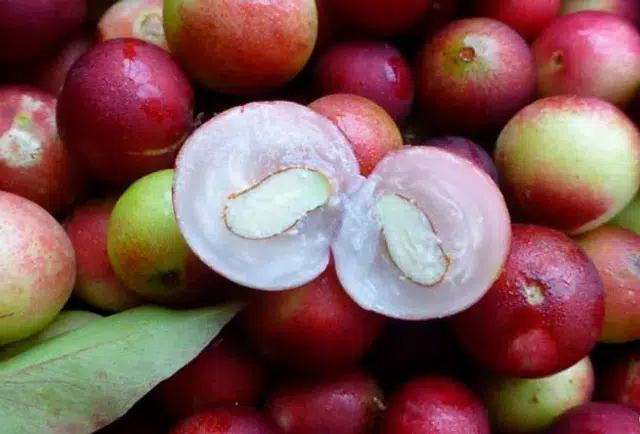
Camu camu is a small, sour fruit that hails from the lush Amazon rainforest. The fruit is celebrated for its exceptionally high vitamin C content, which surpasses that of more well-known sources like oranges and lemons by a significant margin. This potent concentration of vitamin C has positioned camu camu as a sought-after superfood in global health food markets.
Indigenous populations of the Amazon have long utilized camu camu for its medicinal properties. Traditionally, it has been used to bolster the immune system, fight inflammation, and as an overall health tonic. Its rich antioxidant profile, which includes flavonoids and anthocyanins, further enhances its appeal for combating oxidative stress and supporting cellular health.
Beyond its health benefits, camu camu is increasingly making its way into a variety of products, from dietary supplements to smoothies and wellness shots. This growing popularity is driven by the fruit’s reputation as a natural and potent source of nutrients, appealing to health-conscious consumers around the world.
However, the rising demand for camu camu brings to light the challenges of sustainable harvesting. The fruit grows in flood-prone areas of the Amazon, making its collection labor-intensive and environmentally sensitive. Overharvesting can lead to ecological imbalances and threaten the biodiversity of the region.
Efforts are being made to implement sustainable farming practices and ensure that the harvesting of camu camu does not adversely affect the Amazon’s delicate ecosystem. These practices include setting harvesting limits, promoting community-based management, and supporting local initiatives that prioritize environmental conservation.
By addressing these challenges, the continued popularity of camu camu can be balanced with the preservation of the Amazon rainforest, ensuring that this remarkable fruit remains a viable and beneficial resource for future generations.
Graviola: The Versatile Soursop
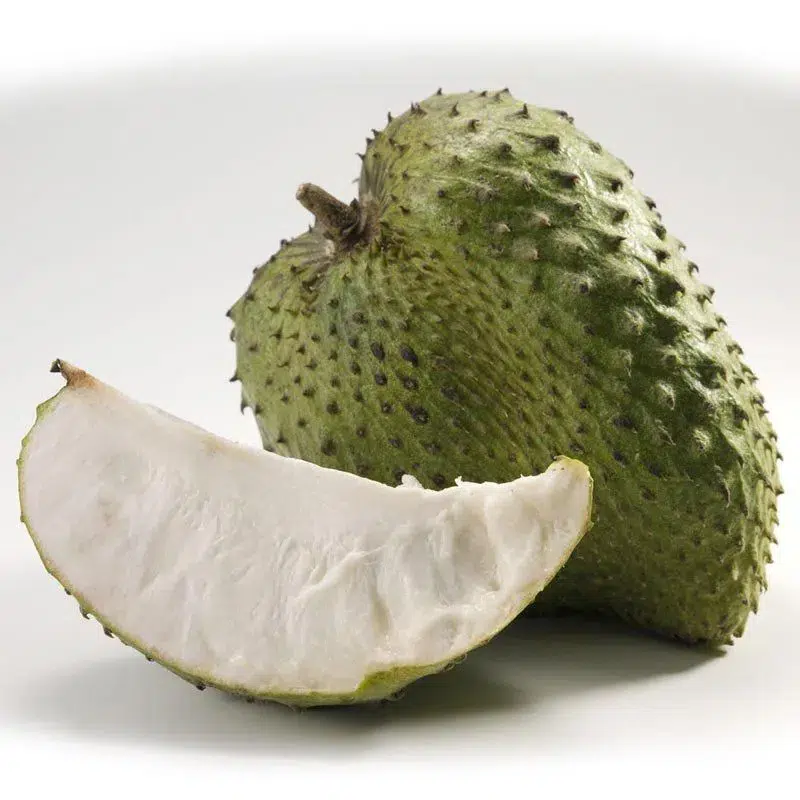
Graviola, commonly known as soursop, is a fruit that stands out with its spiky green exterior and soft, succulent white flesh. This intriguing fruit has found a multitude of applications, ranging from culinary delights to traditional medicinal uses. In Brazilian cuisine, graviola is often blended into refreshing juices and smoothies, providing a unique, tangy flavor that is both invigorating and nutritious. Its creamy texture also makes it an excellent ingredient in a variety of desserts, such as ice creams and custards, adding a distinctive tropical flair.
Beyond its culinary versatility, graviola has been revered in traditional medicine for centuries. The fruit, as well as its leaves, stems, and seeds, have been used in various forms to treat ailments and improve health. One of the most notable potential health benefits of graviola is its anti-inflammatory properties. Compounds found in the fruit are believed to help reduce inflammation and alleviate pain, making it a popular natural remedy for conditions such as arthritis and other inflammatory disorders.
Moreover, graviola has garnered attention for its potential anti-cancer properties. Research suggests that certain chemical compounds in graviola may inhibit the growth of cancer cells and even induce apoptosis, or programmed cell death, in some cancer types. Although these findings are promising, it is important to note that most studies have been conducted in vitro or on animals, and further clinical trials are needed to confirm these effects in humans.
In Brazilian culture, graviola is more than just a fruit; it is a symbol of tropical abundance and a staple in local folklore. Many traditional recipes incorporate graviola, highlighting its significance in both daily life and festive occasions. Whether enjoyed fresh, as part of a delicious dish, or used for its medicinal benefits, graviola continues to be a cherished fruit in Brazil, embodying the rich biodiversity and cultural heritage of the region.
Baru: The Nutty Delight
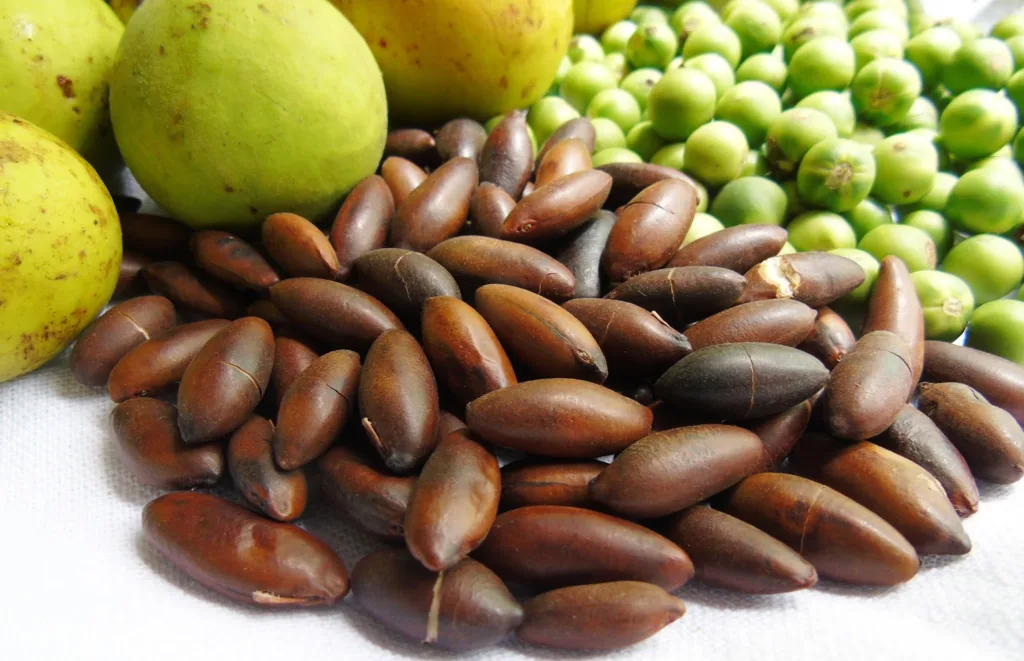
Baru, a lesser-known fruit native to Brazil, is gaining recognition for its unique and nutritious nuts, often referred to as ‘Brazilian almonds.’ These nuts, found within the hard shell of the baru fruit, are making waves in the superfood market due to their exceptional nutritional profile. Rich in protein and healthy fats, baru nuts are an excellent addition to a balanced diet, offering a plant-based protein source that supports muscle growth and repair.
The nutritional benefits of baru nuts do not end with protein content. They are also abundant in essential fatty acids, including omega-3 and omega-6, which are crucial for heart health. Additionally, baru nuts contain significant amounts of dietary fiber, vitamins, and minerals such as magnesium, potassium, and iron. This combination of nutrients supports overall well-being, making baru nuts a valuable component of a health-conscious lifestyle.
Beyond their nutritional benefits, the cultivation of baru nuts presents considerable environmental advantages. The baru tree thrives in the Brazilian savanna, known as the Cerrado, which is a biodiversity hotspot. Cultivating baru trees helps in conserving this unique ecosystem by promoting sustainable agricultural practices. Unlike other crops that require extensive irrigation and chemical inputs, baru trees are resilient and can grow in nutrient-poor soils, reducing the need for external resources.
The sustainable nature of baru cultivation extends to its role in supporting local communities. By harvesting and processing baru nuts, local farmers can generate income while preserving their natural environment. This economic incentive encourages the maintenance of traditional agricultural practices and the protection of the Cerrado’s biodiversity. As demand for this superfood increases, the positive impact on both the environment and local communities continues to grow.
In summary, the baru fruit, with its nutritious ‘Brazilian almonds,’ is not only a rising star in the superfood world but also a model of sustainable agriculture. Its cultivation supports environmental conservation and empowers local communities, making it a truly remarkable addition to the diverse array of unique and exotic fruits from Brazil.
Pitanga: The Sweet and Tart Cherry
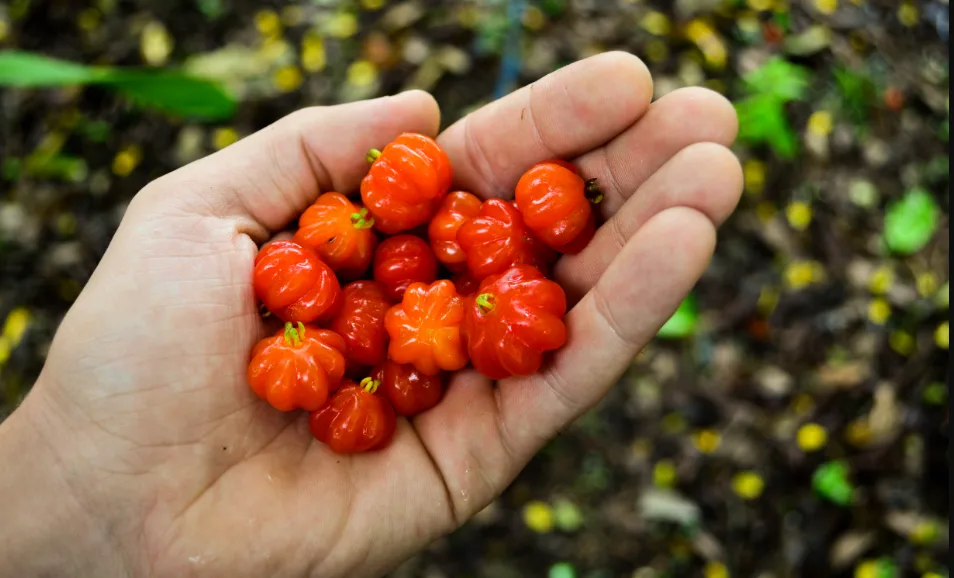
Pitanga, commonly referred to as Surinam cherry, is a distinctive fruit that captivates with its unique appearance and multifaceted flavor profile. The fruit is small and ribbed, with a color spectrum that spans from green to a deep, enticing red. As it ripens, the flavor of pitanga transforms, offering a delightful mix of sweet and tart notes, which makes it an appealing choice for a variety of culinary applications.
Pitanga’s versatility in the kitchen is well-documented. It can be consumed fresh, offering a refreshing burst of flavor, or utilized in the making of jams, jellies, and syrups. Its piquant taste also complements savory dishes and can be found in sauces and chutneys that accompany Brazilian cuisine. Additionally, pitanga is often incorporated into beverages, providing a unique twist to smoothies, juices, and even cocktails.
Beyond its culinary uses, pitanga is celebrated for its health benefits. It is a rich source of vitamins A and C, which are essential for maintaining healthy vision and boosting the immune system, respectively. The fruit also contains antioxidants that help in fighting free radicals, potentially reducing the risk of chronic diseases. Furthermore, the presence of anthocyanins and other phytonutrients in pitanga contributes to its anti-inflammatory properties.
In traditional Brazilian medicine, pitanga has long been respected for its therapeutic qualities. The leaves and bark of the pitanga tree are often used in herbal remedies to treat ailments such as diarrhea and high blood pressure. Its use in folklore is also significant, where it is considered a symbol of prosperity and good fortune.
Moreover, the pitanga tree is valued as an ornamental plant. Its attractive foliage, fragrant flowers, and vibrant fruits make it a popular choice for gardens and landscapes. Its resilience and adaptability to various soil types further enhance its desirability for ornamental planting.
Overall, pitanga stands out not only for its unique flavor and culinary versatility but also for its health benefits and cultural significance. Whether appreciated as a food source, a traditional remedy, or an ornamental plant, pitanga is a cherished fruit in Brazil’s rich tapestry of flora.





